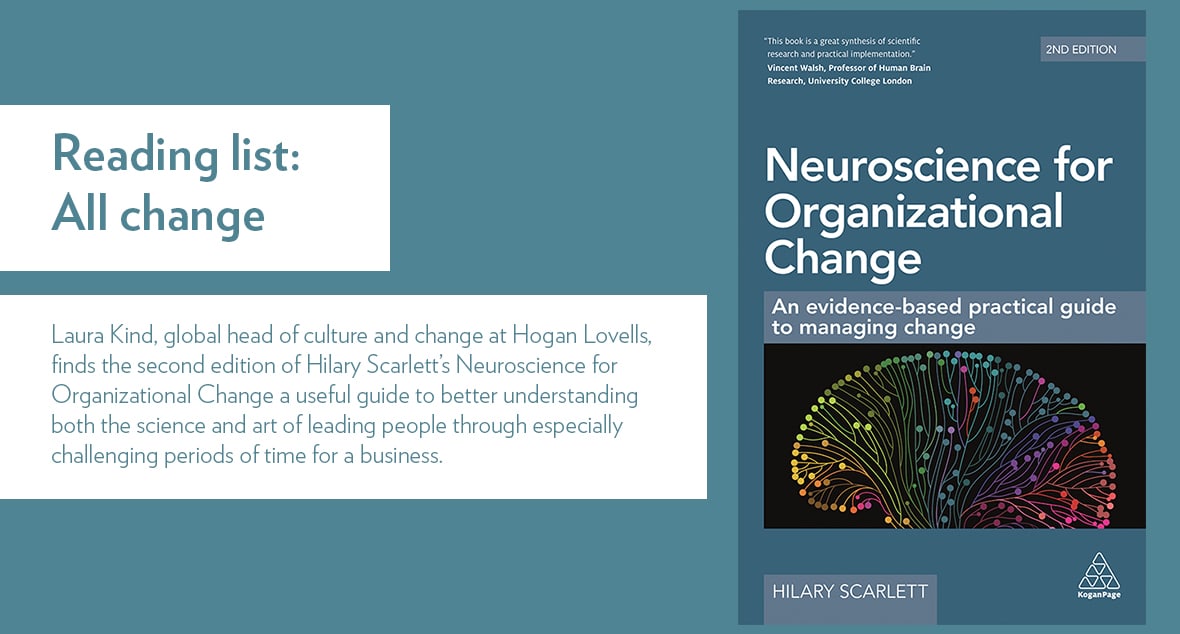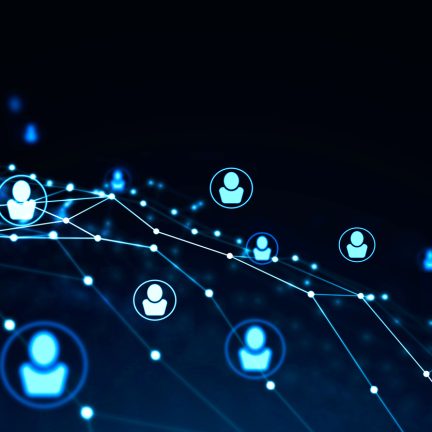
All change
Laura Kind, global head of culture and change at Hogan Lovells, finds the second edition of Hilary Scarlett’s Neuroscience for Organizational Change a useful guide to better understanding both the science and art of leading people through especially challenging periods of time for a business.
If change is the new normal and a constant in our organisations, and the critical factor in our ability to succeed is our people, then surely understanding how people’s brains respond to change is essential if we are to continue to perform at the highest levels? Whether the changes we seek to implement relate to the launch of a new IT system, trying to increase collaboration across the business, or simply updating the office space we occupy, we ultimately need our people to engage with, and adapt to, these changes for the benefits to be truly realised. And herein lies the challenge. We are social creatures, often emotionally led, and we can be highly unpredictable, making even the seemingly simple small changes still difficult to drive forward.
Lynda Gratton, professor of management practice at London Business School, describes managing change as “part science, part art, with the need for a serious dose of wisdom and experience. When it works well it can make a significant and lasting impact on organisational health and wellbeing. When it fails to work it can leave cynicism and despondency in its wake.”
Neuroscience for Organizational Change offers insights that address the ‘part science and part art’ aspects in equal measure, synthesising scientific research with practical advice. The book presents compelling studies, and related evidence, in short digestible chapters, with a focus on practical application in the ‘What can we do?’ summaries.
For me, while part one, which includes an introduction to neuroscience, was interesting, part two is where the science and art really come together, in particular the chapters on ‘Performing at our best during change’, ‘Our social brains; the role of leaders and managers’ and ‘Changing behaviour’. Collaboration is an increasingly important and highly-valued skill, and our ability to navigate the social networks we operate in is essential. However our need for belonging is often threatened during periods of change, and Scarlett illustrates how our brains will process social pain in the same way that they process physical pain. When there is a threat to our wellbeing (social or physical), our brains tell us that we need to act, leading to some of the emotionally led and unpredictable behaviours our seemingly simple organisational changes can trigger. This book offers insights about how to minimise the more unproductive human responses, with ideas for how to manage and embed change more effectively.
In short, I would describe Neuroscience for Organizational Change as an easy-to-read introduction to many of the important aspects of how to better understand how people deal with change, with practical tips for what we can do to lead through change more successfully.


